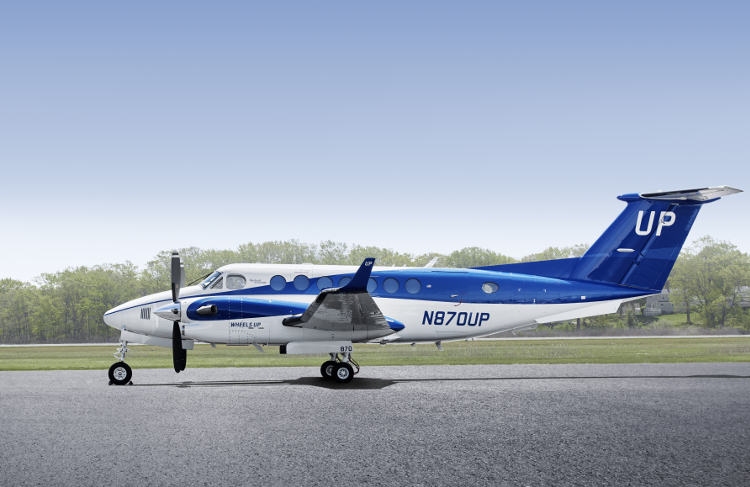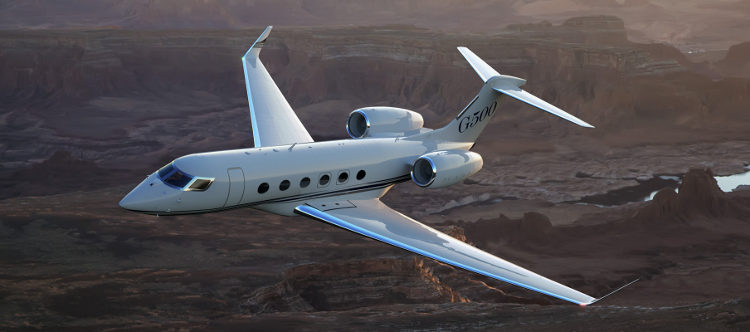Both Flexjet and Wheels Up, have built reputable brands in the private aviation sector. They both offer access to a fleet of newer aircraft. But they have some significant differences in the planes and services they provide. Here’s a closer look at how they compare.
Background & History
At just four years old, Wheels Up has focused on reducing the up-front costs of private flying and offering various value-added experiences. The company was created by businessmen Bill Allard and Kenny Dichter. It offers a mobile app that allows members to manage their accounts, book flights, look for ride-share opportunities and private shuttle flights at a reduced cost, and find discounted one-way fare on empty-leg flights.
Wheels Up owns or leases its fleet of 75+ aircraft. Each flight is manned by two captain-rated pilots from FAA-licensed and DOT-registered air carriers participating in their program. Wheels Up’s specialty program, Wheels Down, connects members to exclusive events and experiences, a luxury concierge service, and additional benefits valued at up $25,000. The company is currently eyeing an expansion into Western Europe and other overseas markets.
Originally launched in 1995 as a collaboration between Bombardier and AMR Combs (a division of AMR Corp, the parent company of American Airlines), Flexjet was acquired in 2013 by entrepreneur Kenn Ricci and his firm Directional Aviation Capital (DAC). Sister companies in the DAC portfolio include Skyjet, Sentient Jet, and Flight Options. FlexJet is now the world’s second-largest fractional jet ownership services provider. It’s known for its focus on a fleet of young aircraft, with an average age of six years.

Aircraft in Fleets
The Wheels Up fleet consists of two types of aircraft:
- King Air 350i - This twin-turboprop aircraft, part of a line that’s been in continuous production since 1974, has a maximum range of up to 1,800nm (3,345km). It can carry up to 8 passengers and has 71 cubic feet of baggage capacity.
- Cessna Citation Excel/XLS - Offers the amenities of a midsize-cabin jet with the ability to fly into and out of smaller airports. It has seating for up to 7 passengers with 79 cubic feet of baggage capacity and a maximum range of 1,858nm (3,441km).
Flexjet offers a larger selection in four size/range categories:
Light and Super-Light Cabin
- Embraer Phenom 300—up to 6 passengers; 74 cubic feet baggage capacity; 3,196 km range. One of the most requested aircraft for private travel, thanks to its comfortable interior.
- Learjet 75LXI—up to 6 passengers; 50 cubic feet baggage capacity; 3,299 km range. This jet boasts more legroom, a flat floor, and a high-tech cabin-management system, as well as improved aerodynamics for better performance in hot climates and high altitudes.
Midsize and Super-Midsize Cabin
- Embraer Legacy 450—up to 8 passengers; 150 cubic feet baggage capacity; 5,370 km range. A spacious midsize jet, the Legacy has a stand-up cabin and flat floor, as well as enlarged luggage capacity.
- Bombardier Challenger 300—up to 9 passengers; 106 cubic feet baggage capacity; 5,552 km range. Spacious and comfortable, this jet is capable of flying transcontinental distances.
- Bombardier Challenger 350—up to 9 passengers; 106 cubic feet baggage capacity; 6,047 km range. One of the longest flying ranges of all private jets.
Large Cabin
- Gulfstream G450—up to 13 passengers; 169 cubic feet baggage capacity; 7,242 km range. A top choice for intercontinental flights.
Ultra-Long Range
- Gulfstream G500—up to 16 passengers; 175 cubic feet baggage capacity; 9,630 km range. This jet is capable of traveling at Mach .90, combining incredible speed with long range.
- Bombardier Global Express—up to 12 passengers; 185 cubic feet baggage capacity; 11,080 km range. Special attention to space, luxury, and technology give this jet an edge in long-range business travel
- Gulfstream G650—up to 16 passengers; 195 cubic feet baggage capacity; 12,964 km range. Known for having the lowest-pressurized cabin altitude of all business aircraft.

Availability & Notice Periods
Wheels Up gives members access - with guaranteed availability 300 days a year for individuals and 315 days a year for businesses - to its entire fleet with as little as 24-hour notice. Members can increase the number of days of guaranteed availability through the prepaid programs. These programs, in which you prepay for hours or deposit funds, bring the following benefits as the size of the deposit increases:
- The number of guaranteed availability days increases
- The number of peak days decreases
- The amount of time required for advanced booking decreases
Wheels Up also provides a flight desk for expert help in locating a larger aircraft or for when their own aircraft are not available.
For fractional ownership, Flexjet requires 10 hours’ call-out time for its fractional members. For the Jet Card program members 24 hours are needed on regular days and 48 hours on peak days. The jet card program has 10 peak days and 30 premium days.
Hours, Memberships, and Pricing
Wheels Up operates on a pay-as-you-fly membership model with no minimum hourly commitment. Individuals pay an initiation fee of $17,500 ($29,500 for businesses), with annual dues in year two and beyond priced at $8,500 for individuals ($14,500 for businesses). Members pay a fixed hourly rate only for occupied flights: $4,295 on the King Air and $7,495 on the Citation Exel/XLS. Wheels Up also offers a pre-purchase block, available in increments of $50,000, $100,000, $200,000, and $400,000, which unlocks access to additional guarantees, fewer peak days, and other benefits; the cost of each flight is deducted from the block.
In the past year, Wheels Up has partnered with fitness-equipment company Peloton, luxury hospitality company Inspirato, and mattress distributor Casper on premium perks for members.
Flexjet is tight-lipped on pricing in its fractional jet program, but, like most private aviation companies, recommends fractional ownership for those who fly 50 or more hours per year. In addition to an initiatial acquisition fee, count on monthly management fees, as well as an occupied hourly fee that includes the cost of fuel.
Flexjet also offers a program to fractional owners called Versatility Plus, which allows them to make unused hours available for purchase by other owners. In addition, their Global Access pricing reduces the hourly rate as the length of the trip increases, to help offset the higher costs of cross-country and intercontinental travel.
The Flexjet 25 jet card, which starts around $160,000, is made for those who fly fewer than 50 hours per year and prefer to skip the up-front investment. The site offers 365-day, guaranteed access to two aircraft, the Phenom 300 and Challenger 300, and notes that additional fees may apply during peak travel days.
Owners and card members of Flexjet are provided with a variety of premium perks, from access to private golf clubs to travel and spa packages, plus elite travel status with its international commercial partners.
Terms
Wheels Up membership renews annually. The Flexjet 25 card is good for 24 months. The latter’s fractional ownership contract runs from 30 to 60 months.
There are quite a few differences between these two private aviation companies, from costs to aircraft and operation of the aircraft. If the wider jet selection and shorter call-out time is important to you, Flexjet is the winner. But if having a smaller selection of aircraft to choose from, including a turboprop, and 24-hour booking notice aren’t a deterrent, Wheels Up does provide some compelling reasons to join.

